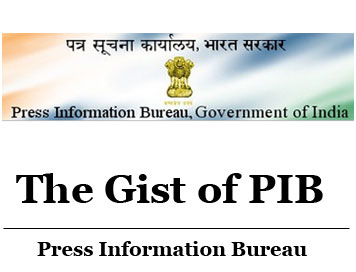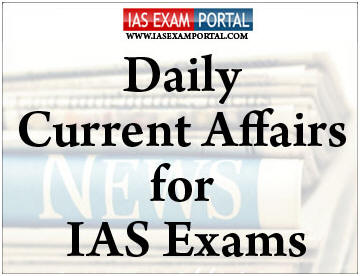-
The Mizoram government has been making efforts to resolve
the long-pending boundary dispute with Assam and has asked the Centre to
review the inter-State border, the Assembly was informed on Monday.
-
In reply to a query by Congress legislature party leader
ZodintluangaRalte, Home Minister Lalchamliana said the State government had sent
a letter to the Union Home Ministry praying for a review of the border on
December 15 last year.
-
He said the government was making efforts to resolve the dispute
at Zophai area near Bairabi town along the State border with Assam.
-
The last border stand-off between the two States had taken place
at Zophai in March 2018 when members of a students’ body of Mizoram attempted to
construct a wooden resting shed there. The Assam police had resisted their bid
and many students were allegedly injured.
-
Mr.Lalchamliama said a core committee constituted by the State
government in May 2018 to study the boundary issue has collected some important
documents related to the border.
-
In July last year, Chief Minister Zoramthanga had said, without
elaborating, that his government had evolved a strategy to resolve the border
dispute.
-
On that strategy, the Home Minister said in the Assembly on
Monday that it was not made public as that would not be “convenient”.Several
discussions held between the two States since 1995 to resolve the border dispute
have yielded little result.
-
One year after the launch of the
PradhanMantriKisanSammanNidhi, the Centre has revised the farmer income
support scheme’s beneficiary target down to just under 12 crore from 14
crore.
-
In fact, empirical evidence suggests that saturation level will
reach around 10 crore families. So far, almost 8.5 crore farmers have benefited.
-
The scheme, which gives land-owning farmer families an annual
sum of ₹6,000, was launched in the run-up to the 2019 LokSabha election, and new
registrations have slowed after the election.
-
The Centre’s beneficiary estimate of 14 crore was initially
based on the number of landholdings recorded in the agricultural land census.
-
The revised estimate of 11.97 crore is based on the 9.84 crore
who have registered themselves on the portal so far (although only 8.45 crore
have received money so far), plus an estimated 2.13 crore beneficiaries left
out, mostly from West Bengal and Bihar.
-
In Bihar, the potential beneficiaries number 158 lakh. However,
only 59.7 lakh farmers have uploaded their data on the PM-KISAN portal so far.
“The State has adopted a beneficiary application-based approach, which is
delaying identification and upload,” said the presentation.
-
While the Indian banking sector may be slowly turning around
on the back of improvement in asset quality, its profitability remains
fragile, Reserve Bank of India Governor Shaktikanta Das said.
-
He also said that banks continued to face challenges like the
present crisis in the telecom sector.
-
He said the capital position of banks had improved on account of
recapitalisation of public sector banks by the government and capital raising
efforts by private sector banks.
-
According to Mr. Das, the overhang of non-performing assets (NPAs)
remains relatively high, which is weighing on credit growth.
-
On consolidation in public sector banks, he said a properly
worked out consolidation of PSBs can generate synergies in allocation of
workforce and branches.
-
On non-banking finance companies, he said, recognising the
systemic importance of such entities and their inter-linkages with the financial
system, the RBI had taken steps and the asset-liability management (ALM)
position and other aspects of top 50 NBFCs were being closely monitored,
covering all NBFCs with asset size above ₹5,000 crore.
-
Union Minister for Rural Development Narendra Singh Tomar
has said, after evaluating the success rate of Rurban Clusters scheme,
government is intending to move ahead to construct 1,000 more urbanized
clusters in rural areas.
-
Speaking at the of 4th Anniversary Celebration function of
Shyama Prasad MukherjiRurban Mission, SPMRM in New Delhi today, Mr Tomar said,
sense of mutual cooperation between people, who want urbanization in their rural
space and concerned ministry officials will be instrumental in ensuring the
success of the scheme.
-
On the occasion, the Minister launched GeoRurban, a mobile app
to be used for Geo-tagging for the assets in the rurban clusters.
-
AIR correspondent reports that this flagship scheme of Centre,
launched by Prime Minister NarendraModi on 21st February in 2016, aims at
transforming these Rurban clusters by stimulating local economic development,
enhancing basic services, and creating well planned Rurban clusters.
-
The child malnutrition rate in Bangladesh has declined
sharply over the last six years. The finding was reported in the Multiple
Indicator Cluster Survey (MICS) 2019, jointly conducted by the Bangladesh
Bureau of Statistics (BBS) and UNICEF. The survey has also recorded an
improvement in many other areas related to health and nutrition, Child
protection, hygiene and sanitation.
-
The rate of chronic malnutrition among children measured by the
stunting level among them has come down from 42 percent in 2013 to 28 percent in
2019. The percentage of underweight children below 5 also declined from about 32
percent to 22.6 percent over the same period. The infant mortality rate has also
declined from 46 to 34 per thousand live births between 2012-13 and 2019.
-
The survey reports that the percentage of children of school
entry age who enter the first grade of primary school marked a sharp upward
trend from 33 percent in 2012-13 to 61.4 in 2019.
-
The survey also records improvement in access to and use of
toilets, birth registration, ante-natal care coverage, institutional deliveries
and similar other parameters indicating an overall improvement in child and
mother health in the country.
-
However, the availability of Children’s books declined from 8.8
percent to 6.1 percent during this period. The incidence of violent disciplining
of children has shown an upward trend during this period.



